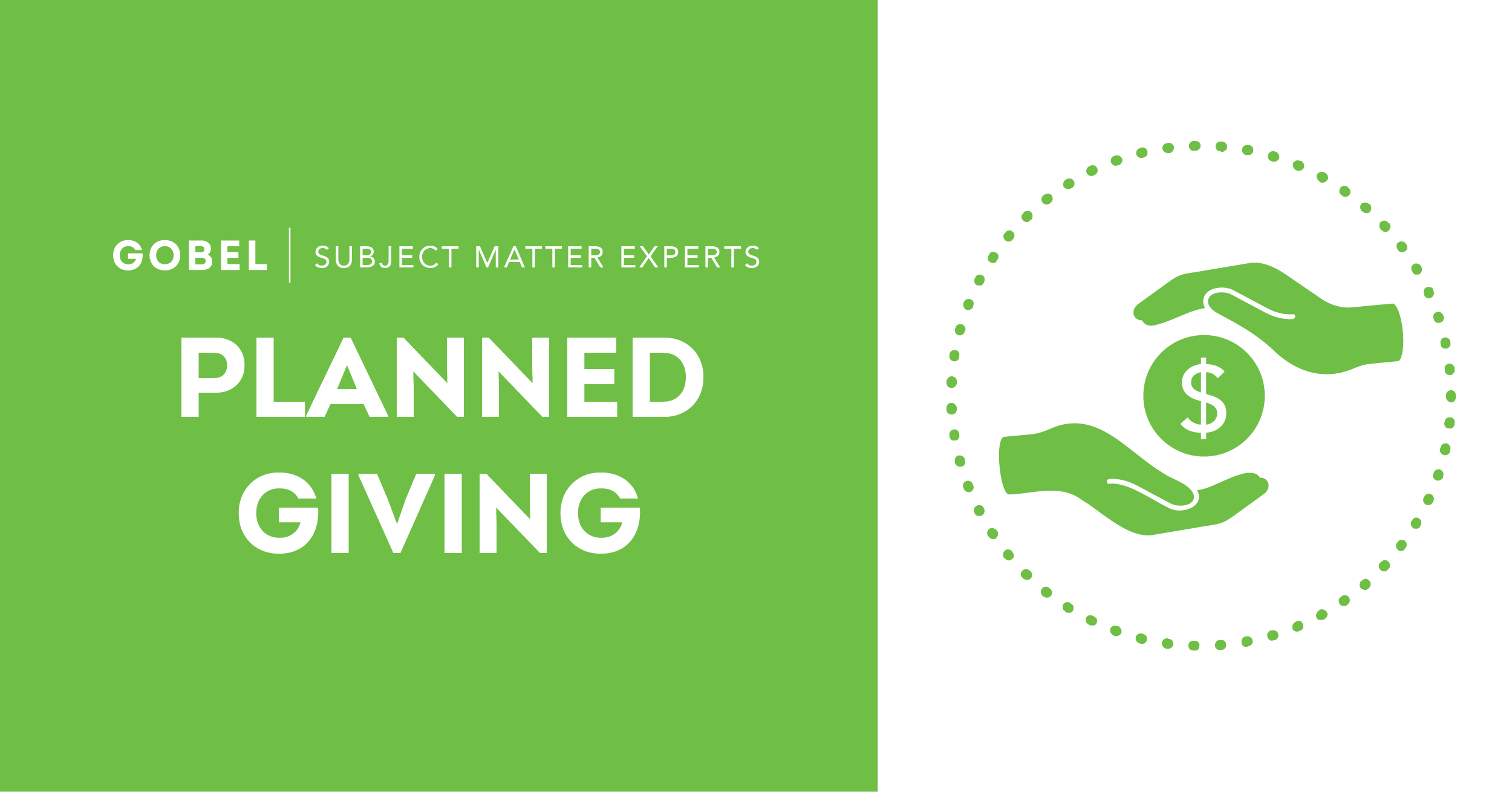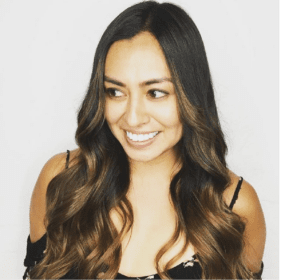
GOBEL Subject Matter Expert Blog: Tactical strategies for bequests and beneficiary designations your organization can use today…
By Fritzie Dizon
In our last post, we discussed common misconceptions about planned giving, with the most common misconception being that it is complicated and complex. While there are certain scenarios or gift vehicles that can be complex, there are strategies that you can implement with relative ease, especially when just beginning a planned giving program.
Bequests, gifts made to a nonprofit organization as part of a donor’s will, are the most common type of planned gift. In fact, even if your nonprofit organization does not have a formalized planned giving program or staff, if your organization is a 501(c)(3), you can accept realized bequests and likely already have. According to the Giving USA 2022 report, donors bequeathed over $46 billion to charity in 2022, representing 9% of all charitable gifts made in 2021. On the nonprofit’s side, accepting a realized bequest creates an additional stream of revenue and is similar to accepting a check from a living donor, sometimes with a little additional paperwork and coordination.
There are also a few advantages for donors who give via a bequest:
- Bequests are meaningful. They are a meaningful way to support the charities and causes that mean the most to the donor and costs them nothing now, while lowering their estate tax burden.
- Bequests are flexible. Bequests cost nothing upfront and allow the individual to have control of their assets during their lifetime, particularly in the event circumstances change. Estate plans can be revisited (and should be from time to time) and bequest provisions can be updated through a codicil if necessary.
Did you know that your donors can designate all or part of their retirement account to a nonprofit? This isn’t just a strategy for your older audience, if someone has or has had a job with retirement benefits, they will have needed to name beneficiaries for their retirement accounts and your charity could be one they choose to include. For many individuals, retirement accounts like their IRA or 401(k) will be the most significant assets they will accumulate in their lifetimes. If planned appropriately, naming a nonprofit as a beneficiary can minimize the income taxes to both their heirs and their estate.
Naming a nonprofit as a beneficiary for a retirement account is often straightforward. Typically, individuals can update their beneficiaries online or will need to submit a designated beneficiary form through their plan administrator or employer. Most financial services firms will have beneficiary form templates, or they can provide you with suggested language for naming beneficiaries for their accounts. Once the designations are made, the donor’s retirement assets will be passed directly to the beneficiaries (including named nonprofits or charities) without having to go through probate.
Here are a few strategies to leverage bequests and designations at your organization:
- Have a way for your donors to self-identify their interests and estate plans. Here are some examples:
- Add a place on your website for donors to say they have included your organization in their estate plans.
- Include a P.S. at the bottom of your appeal letter or email letting your donors know that they can also consider a bequest or beneficiary designation as another creative way to support your work (that costs them nothing now).
- Include planned giving check boxes on your return mail piece or reply devices for annual giving appeals stating, “I have included (your organization’s name) in my estate plans” or “I am interested in learning more about supporting (your organization’s name) through my estate plans.” Make sure you capture this information in your database if the check boxes are marked.
- Have a plan for following up with the donors who self-identify so that you capitalize on this lead generation plan and book the gifts if your organization’s policies allow you to do so.
- Consider creating a Legacy Society. Starting a legacy society is a great way to recognize the commitment of your planned giving donors. It also helps steward and engage those who have already included your organization in their estate plans.
- Build a strong infrastructure. Make sure you have the infrastructure to accept bequests and trust/estate distributions as well as steward these gifts. This doesn’t necessarily have to be a dedicated planned giving person, especially when building a new program, but having the infrastructure in place will help ensure the funds are directed as the donor intended and allow you to send an acknowledgement to the appropriate individual or executor upon receipt of the estate distribution. Be sure to:
- Create a template for acknowledgement letters specifically for realized bequest distributions from trusts and estates.
- Have your tax exemption determination letter from the IRS ready. Occasionally, financial institutions on behalf of the executor of the estate, might request your organization’s tax exemption determination letter.
- Have all the information ready ahead of meeting with prospective donors. Make sure to pick up on conversational cues with prospective donors and give them the information they need to make an informed decision. We will go into more detail on talking points and conversational cures in a future blog post, but it might sound something like:
- “Many of our loyal donors like you choose to include us in their future plans, is this something you have thought about?”
- “Did you know there are other creative ways you can support us? Would you be open to my sending you information on other ways to make a gift?”
There are certain details that should be readily available or handy as well. This can include taking simple steps such as:
- Making sure that your organization’s tax identification number, legal name, and address are on your website and easy to find.
- Provide sample bequest language on your website. We recommend using counsel to draft bequest language for your organization to share with your constituents.
- Include general information on bequests and beneficiary designations on your website to encourage your constituents to begin considering the idea of a legacy gift.
This is just barely scratching the surface in ways that you can maximize your fundraising efforts through planned giving. We’re just getting started! Hopefully, by employing a few of these strategies you can either start or strengthen charitable giving at your organization by educating your donor community on other creative ways they can support your good work.
—-
Estate planning needs will differ based on personal circumstance and applicable state and federal laws. The information provided here is for educational purposes only and is not intended to provide and should not be construed as providing legal or tax advice. This is general information and should not intended to serve as the primary basis for tax-planning or investment decisions and is not a substitute for the advice from an attorney or financial advisor.
ABOUT GOBEL SUBJECT MATTER EXPERTS: GOBEL Subject Matter Experts are healthcare philanthropy professionals working in some of the top shops in the country, sharing best practices and insights. For more information about GOBEL’s Subject Matter Expert program, or to suggest a topic for coverage, email jmoody@gobelgroup.com.
 ABOUT THE AUTHOR:
ABOUT THE AUTHOR:
Fritzie Dizon is the Director of Estate and Gift Planning at Scripps Research in La Jolla, California. Fritzie began her career in fundraising as a Development Assistant in Principal Gifts at UC San Diego and then at the Birch Aquarium at the Scripps Institution of Oceanography. Before joining the team at Scripps Research, Fritzie worked with the Office of Gift Planning at Columbia University and Columbia University Irving Medical Center for 9 years. During her time with Columbia, Fritzie honed her knowledge in planned giving and learned to appreciate its impact and power in philanthropy. Her involvement in two campaigns at Columbia University provided unique experiences in the role of planned gifts as it relates to strategic planning, operations, donor relations and marketing.
Fritzie is a graduate of UC Irvine with a degree in Environmental Analysis and Design. She is also a graduate of the Nonprofit Management Graduate Program at the School of Professional Studies at Columbia University. Over the last five years she has also served as an Adjunct Associate Instructor for the School of Professional Studies at Columbia for the Marketing Strategies and Introduction to Planned Giving courses.
When Fritzie isn’t working, traveling, or reading on the beach, she enjoys being an auntie to her four nieces and nephews (her favorite role!).
